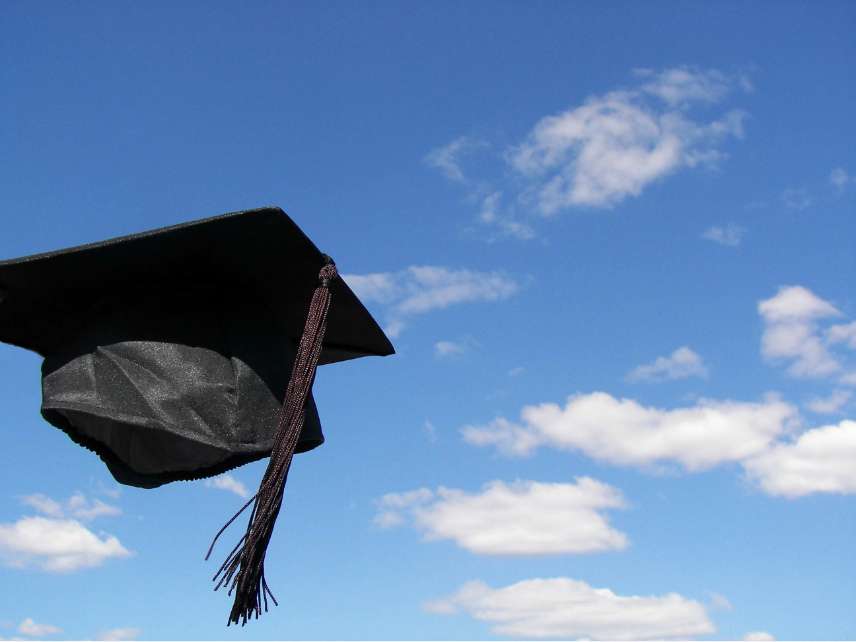2 in 5 Top-Ranking Liberal Arts Schools Have No Full-Time Republican Professors
New study explores liberal bias of university faculty-it's worse than we thought

In late April, Mitchell Langbert, an associate professor at Brooklyn College, published a study on ideological homogeneity at liberal arts colleges in the journal Academic Questions. His findings confirm what many right-wingers have been whispering—and shouting—about for a while now: nearly 39 percent of the colleges sampled are Republican-free, in terms of faculty ideological makeup.
Langbert sampled 8,688 tenure track Ph.D.-holding professors from the top 51 liberal arts schools, according to the 2017 U.S. News and World Report list. He used only full-time, tenure track faculty (full, associate, or assistant professors) and excluded all part-time professors (adjunct, visiting, and emeritus). Langbert then matched these names with voter registration records, using only colleges in states where voter registration information is public.
He also excluded 101 professors—a little more than one percent of the total sample—from the analysis, because they were registered as members of minor parties (cue big-L libertarian weeping).
He found "a D:R ratio of 10.4:1 across all liberal arts departments if the military colleges are included and 12.7:1 if the military colleges are excluded." Unsurprisingly, the hard sciences—engineering, chemistry, physics, and mathematics—had more even ratios of Democrats to Republicans than fields like sociology, english, religion, and anthropology. Communications ranked highest in terms of ideological homogeneity skewed toward the left.
Langbert could not find a single Republican with an "exclusive appointment" to gender studies, Africana studies, or peace studies. In total, he found more than 800 departments that did not employ a single Republican, and only 225 that did—so around 78 percent of departments did not contain a single full-time professor who identifies as Republican.
Of course, some schools are outliers: Thomas Aquinas, a Roman Catholic college with under 400 students, has an impressive 33 full-time faculty who identify as Republican. West Point and the U.S. Naval Academy, two military schools, also have high percentages of Republican-leaning faculty; and Claremont McKenna College and Kenyon College are also outliers in terms of their relatively high amount of ideological diversity.
This issue isn't something that's popped up recently; the trend has looked this way over time, and studies done in the U.K. show similar trends. Langbert writes, "More than a decade ago, Stanley Rothman and colleagues provided evidence that while 39 percent of the professoriate on average described itself as Left in 1984, 72 percent did so in 1999."
All of this is not to say that professors should convert to Republicanism, or that the world would be made better with political homogeneity in the other direction (quite the contrary). But liberal bias seeping more deeply into the institutions that control credible scholarship, and into the institutions tasked with churning out the next generation of thinkers, is cause for concern.
"Political homogeneity is problematic because it biases research and teaching and reduces academic credibility," writes Langbert. "Even though more Americans are conservative than liberal, academic psychologists' biases [for example] cause them to believe that conservatism is deviant."
This should be cause for concern for anyone who cares about fostering intellectually rigorous environments where young people can test out their most wild, contrarian, and (sometimes) abrasive beliefs, all while being fiercely challenged by their intellectual opponents and course material. It's difficult to create that ecosystem when faculty seemingly agree on everything.


Show Comments (302)